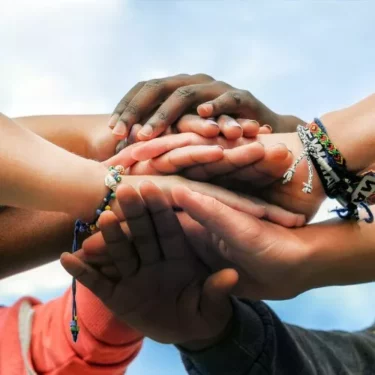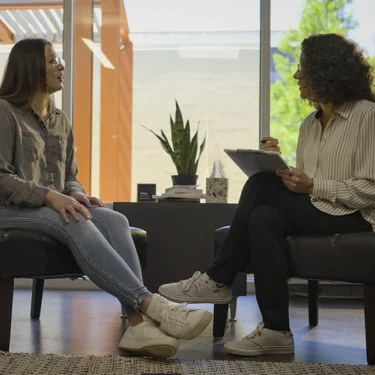As someone who participates and engages with faith-based organizations, I have seen the impact of child maltreatment firsthand. I have seen the bruised faces of children as they enter bible study groups, I have heard conversations among leadership around finding a suitable home for a child to be placed for the night to avoid continued situations of abuse, I have watched my family members and church members provide safe spaces for children to vent their frustrations about their current home life, if even for a brief moment of reprieve.
April is Child Abuse Prevention Month when the United States recognizes the importance of strengthening families to prevent child abuse and neglect. For decades, these acts of cruelty inflicted on children have been labeled as “very serious,” yet the rates of abuse continue to rise.
Child maltreatment is a global problem that extends beyond race and culture and often results in lifelong consequences that impact overall physical and mental health. According to the Centers for Disease Control and Prevention (CDC), at least one in seven children have experienced child abuse and/or neglect in the past year. More specifically, African American (25%), Asian/Pacific Islander (21%) and multiracial children (21%) have a higher prevalence of substantiated physical abuse than White children (20%) and are more likely to experience trauma due to structural racism and historical trauma.
Improving the lives of children impacted by abuse has become increasingly pertinent, especially as the world continues to navigate the global COVID-19 pandemic. The impact of COVID-19 has resulted in decreased attention to children’s health, nutrition, education, protection and mental wellbeing. Youth and adolescents are forced to stay at home due to school closures, as their parents face heightened stress and anxiety from lost income and potential crowding in the home.
Statistics show that violence was reported at higher rates against children when schools were closed compared to when schools were open. In addition, nearly one-third (32%) of the households had a child and/or parent/caregiver reporting that violence had occurred in the home, including children and/or adults being verbally or physically abused. Thus, the COVID-19 pandemic has been conceptualized as a multisystem cascading global disaster impacting the lives of children across multiple levels. Simply put, drastic measures are needed to enable children and adolescents to flourish in society today.
Providing opportunities for children to develop into physically and mentally healthy adults is integral to addressing the impact of abuse on youth and adolescents. As a society, we can enact change and push the needle at the individual, political and community levels. To shift the narrative around child maltreatment, the community-at-large, mental health and addiction treatment facilities, school systems, government entities and others can take steps to address the following:
- Treat caregivers for certain opioid-use disorders. Often, the abuse of children is directly associated with their surrounding environment and stems from their upbringing. At the individual level, treating a caregiver’s opioid use disorder potentially lowers the rate of substantiated abuse or neglect, suggesting treatment is effective in reducing immediate risk to children. Buprenorphine treatment, a drug used to reduce opioid misuse and opioid related mortality, can affect child welfare caseloads by reducing the overall prevalence of maltreatment related to opioid use disorder (OUD).
- Increase the attention to macroeconomic policies, housing policies and social protection policies. Intervention efforts tasked to help meet the needs of impacted children and families at the policy level must be targeted for change to truly take shape. For maximum effectiveness, social supports need to be integrated with community services, such as social skills training, home-based family interventions, parenting education and, in some cases, substance abuse treatment.
- Screen children for social determinants of health within school-based health centers. Schools often act as a child’s first layer of defense in terms of receiving education, nutrition and medical services all in one, thereby making school systems a prime location to screen for certain social and economic challenges that may impact youth populations. Unfortunately, research has shown that there are many gaps in the overall implementation of school-based activities and health services to address the social determinants of health (SDOH) because not all schools have the capacity to provide various health care services. Therefore, it is imperative to incorporate the routine screening of the SDOH within school systems to help identify potential cases of abuse among children.
- Increase the accessibility and continuity of affordable high-quality childcare. At the community level, low income has the power to increase child maltreatment by increasing parental stress because of perceived hardships, emphasizing the overall need for affordable care among impacted families to reduce disparities on multiple levels.
The overall consequences of child maltreatment increase the risk of developmental, physical health and mental health outcomes and, in some cases, can lead to fatality.
The stories I have seen unravel are heart wrenching and require the proper care and attention necessary to drive effectiveness in addressing child maltreatment. All it takes is a few steps in the right direction and the desire to impact the lives of millions. We, as a nation and as professionals in the field, must continue to position ourselves to lead communities in preventing child abuse and neglect before it happens.
If not us, then who?
Guest Author
Project Coordinator
Practice Improvement & Consulting



